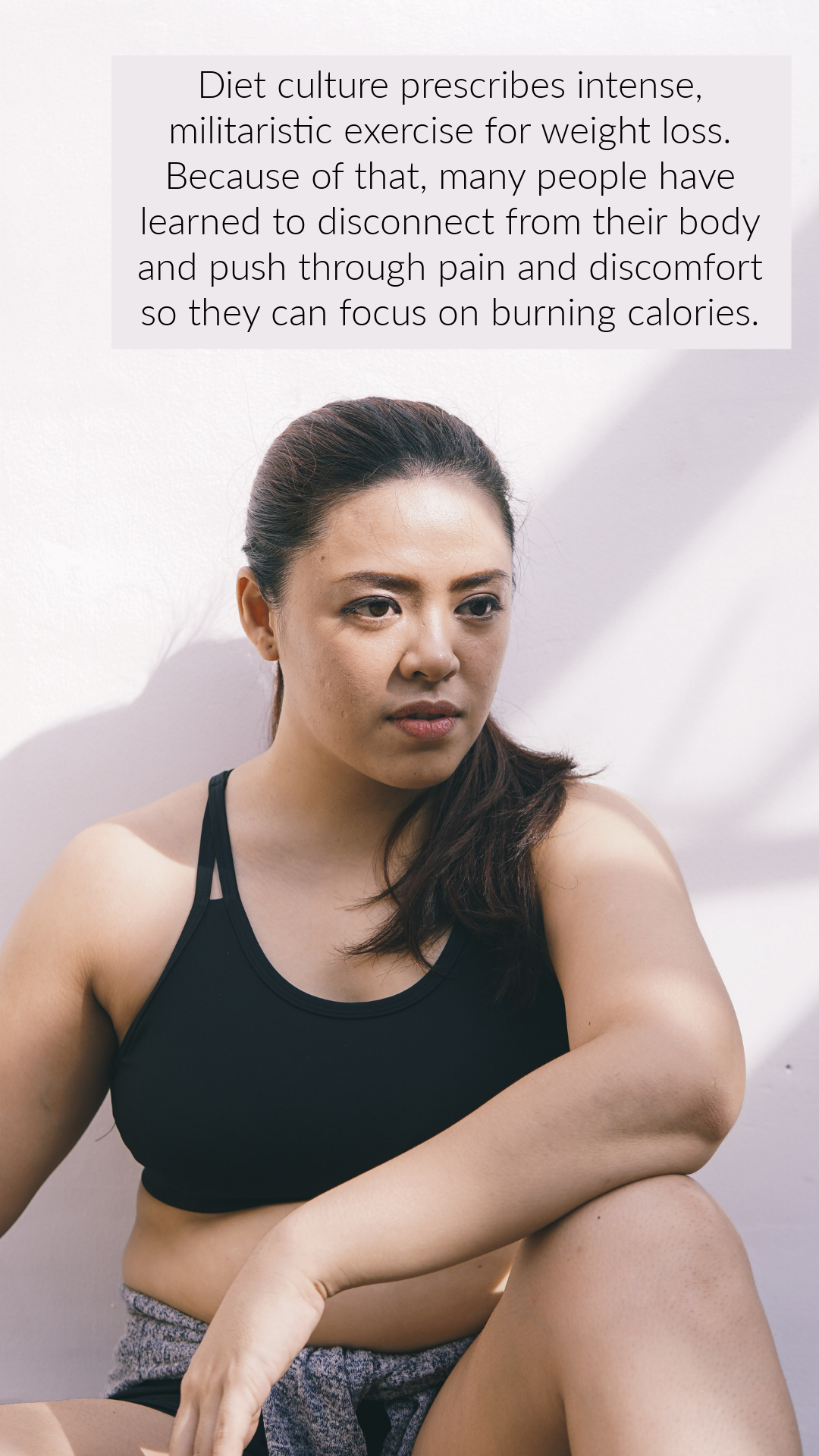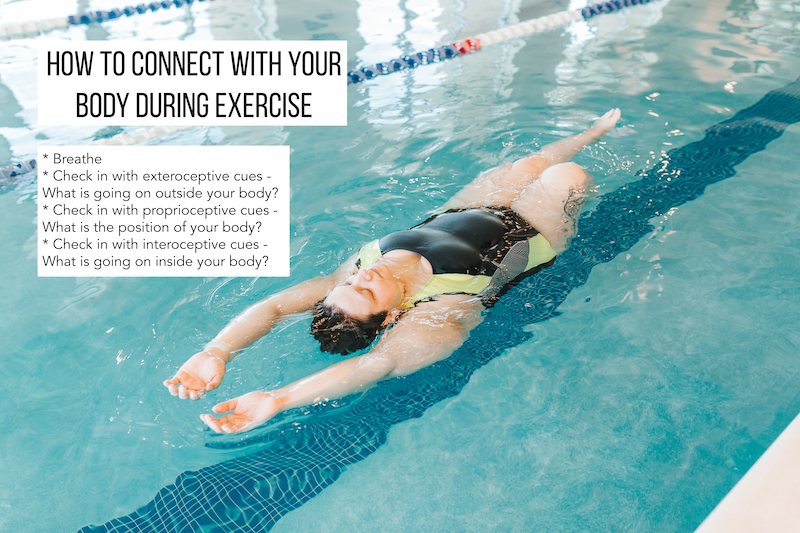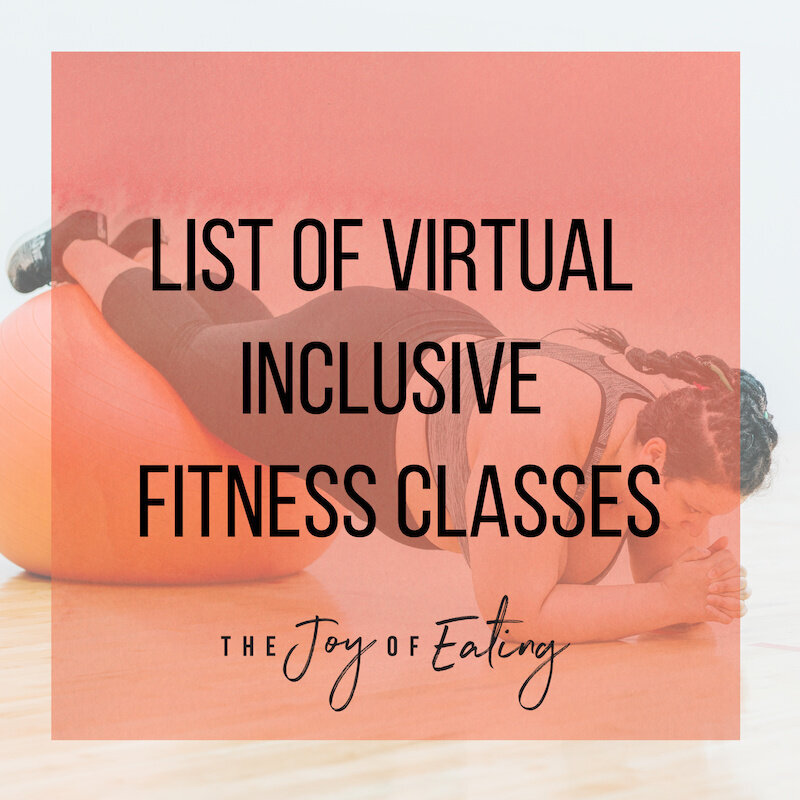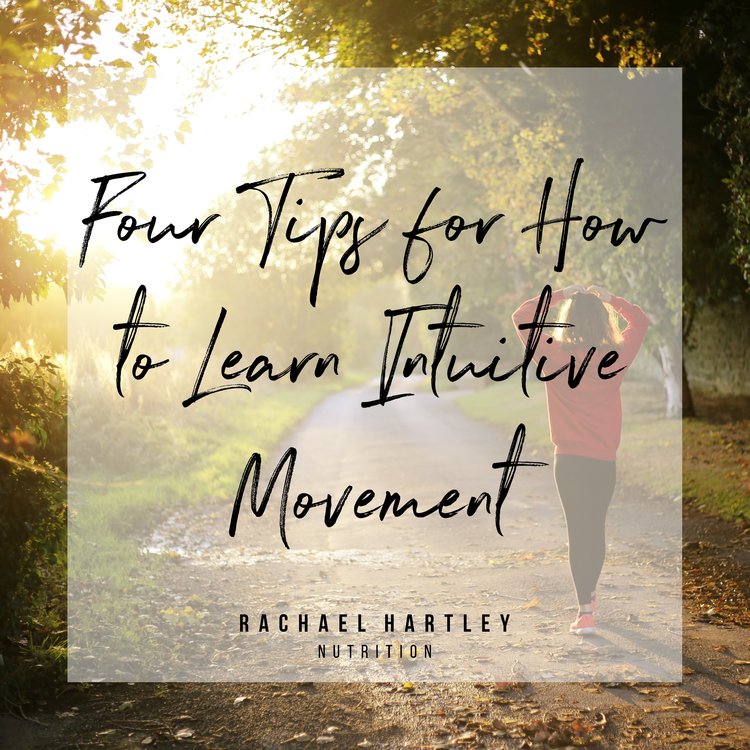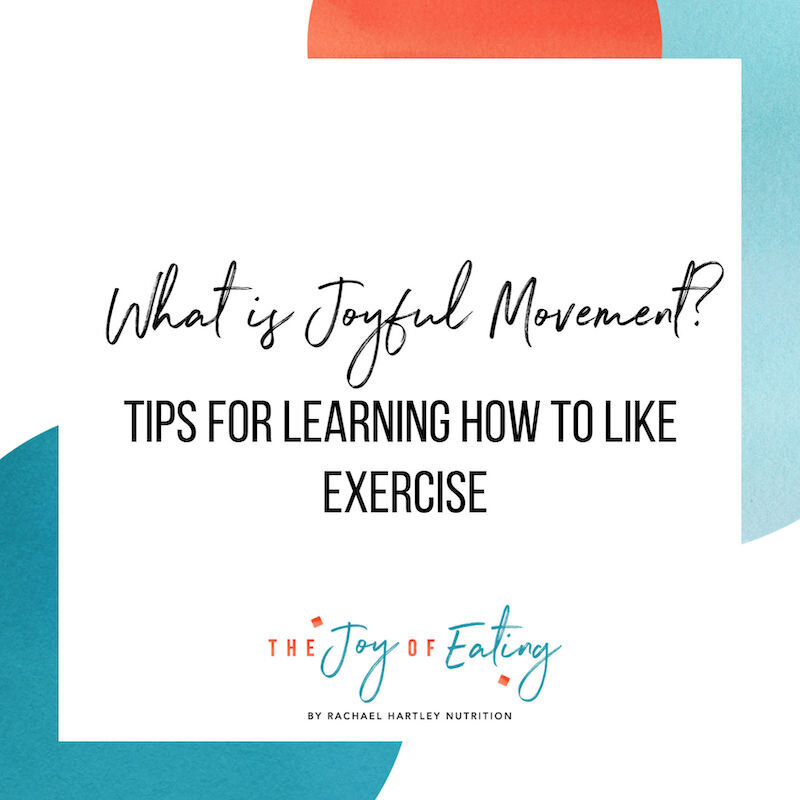Mindful Movement: An Exercise for Bringing Mindfulness to Physical Activity
If you started exercising to lose weight, you may have learned to disconnect from your body to cope with harsh and punishing levels of physically activity. Mindful movement, which brings the art of mindfulness to your workout, can help you find joy in moving your body and do it in a safer and more intuitive way. This post includes one of my favorite exercises for bringing mindfulness to physical activity.
My husband is the most zen person I know. I jokingly refer to him as human Xanex. He never stresses about the future unless there is something he actually should be stressing about. Even then, it's not really stress. More like intense preparation and contemplation. And he doesn't even have to do meditation or yoga or read self help books or go to therapy to live so in the present moment. It’s just how he is.
I know, I hate him for it too.
Once when we were out walking the dogs, a woman ran past us. As she approached, Scott shushed me. We walked in silence as the random lady ran by, and I quietly wondered if I had somehow been married to a serial killer all these years. After she passed, he explained to me that the sound of feet hitting the pavement was one of his favorite noises. He told me how when he goes running, sometimes he'll turn off the music just to listen to sound of his running. Seriously, who is this guy?
Even though my initial reaction was laughing and rolling my eyes at him (my reaction to most things that come out of my husband’s mouth), his comment really stuck with me. I had always thought of yoga for building mindfulness and that ever elusive mind-body connection. I hadn’t thought of mindfulness as being a part of other types of exercise.
The Science of Mindful Movement
While I personally hadn’t thought of the role of mindfulness in physical activity, many other people have, and have been researching the topic over the years, especially the role of mindfulness may play in motivating physical activity and adherence to exercise regimens. While that’s all well and good, I’m much more interested in the role of mindfulness in helping people have a healthy relationship with movement, and to engage with it in a more pleasurable way.
In the eating disorder and intuitive eating world, mindful movement has long been used as a tool for helping people learn to tune back into their body when working out. Diet culture prescribes intense, militaristic exercise for weight loss. Because of that, many people have learned to disconnect from their body to push through pain and discomfort, so they can focus on burning calories. For people who have struggled with an eating disorder, exercise can become a compulsive eating disorder behavior, and can even lead to trauma. Even outside of the eating disorder realm, there’s cardio gym culture, that teaches people to mindlessly pound away on an elliptical or treadmill, perhaps reading a magazine or watching TV to make it bearable. It makes sense that many people learn to disconnect from their body during exercise.
Disconnection from your body during exercise robs you from the pleasure of movement, but can also be dangerous. I can’t tell you how many clients I have worked with who have seriously injured themselves because they were so focused on getting the workout done, and didn’t recognize the early warning signs of injury. With sayings like “no pain, no gain,” it’s no wonder so many people chalk up pain to being a normal part of exercise, rather than a yellow light warning sign to slow down.
When helping clients heal their relationship with movement, I use mindful movement exercises to help them tune back into their body and discover what feels pleasurable and what feels painful. I also like to use mindfulness to help tune into discomfort, because being able to tolerate moderate levels of discomfort may be part of healthy movement - and recovery in general! There can be a tendency to avoid discomfort, but tuning into it helps you feel the sensation and move past it. A helpful skill in many areas of life as you can imagine!
An Exercise for Mindful Movement
Here’s one of my favorite exercises for bringing mindfulness to physical activity.
Anchor With Your Breath
To prevent injury, it's important to stretch before exercise. Use that time to do some deep breathing and prepare yourself mentally for movement. Take deep breaths in through your nose and out through your mouth. Then as you move, continue to breathe and make sure you're not holding your breath as many people do when they’re disconnected during exercise.
As you move your body, briefly check in with the following areas of body awareness.
Mindful Movement: Exteroceptive Awareness
Exteroceptive awareness has to do with awareness of external stimuli, like vision, hearing, smell and touch. Basically, how is your body interacting with your external world? As you are moving, take a moment to tune in to what is going on outside your body. I like to run through my senses, and check in with each. Here’s a few examples:
Notice the flowers in peoples yards as you walk outside.
Be like my husband, and listen to your feet hit the ground as you run.
Notice the feeling of sweat dripping down your back.
Smell the fresh air outside….or the icky gym smells!
Feel how your clothing and shoes rub against your body.
Feel your hands or feet pressing against the floor in yoga class.
Listen to the breath of everyone around you.
Mindful Movement: Proprioceptive Awareness
Proprioception has to do with awareness of your body’s position in space. As you move your body, notice it’s position and alignment, and see how it changes as you move your body. Here’s some examples:
As you run, notice your legs and how they move.
Notice the alignment of your hips and back in a yoga position.
Observe the position changes of your arms as you dance or do aerobics.
Pay attention to where your feet are balanced underneath you in barre class
Mindful Movement: Interoceptive Awareness
Interoceptive awareness is awareness of the physical sensations inside your body. To check in with interoceptive awareness, I like to do a body scan while I move, starting with my feet and moving up to the top of my head. Here’s some examples of what you might notice:
The sensations in your feet as they hit the ground
The trembling of your muscles as they tire
The stretch in your spine as you move into down dog
Cool air moving in through your nose and into your chest, then the warm air moving out through your mouth.
The feeling of your heart beating.
Heat generated as you move your body.
I encourage clients to check in to each of the following towards the beginning, in the middle, and towards the end of a workout. Realistically, you’re probably not going to spend your entire workout completely checked in with your body, and that’s OK! Think of this as taking mindful moments to tune in throughout. The idea is that with time, you’ll naturally be more in tune with your body, and will notice aspects of exteroceptive, proprioceptive and interoceptive stimuli without even thinking about it. Essentially, with time you will begin to engage in more mindful movement without it being an intentional focus.
If you like this blog post on mindful movement, follow my joyful movement pinterest board for more inspiration.
This post on mindful movement was originally published Jan 2016 and has been updated to give you the best possible content.


